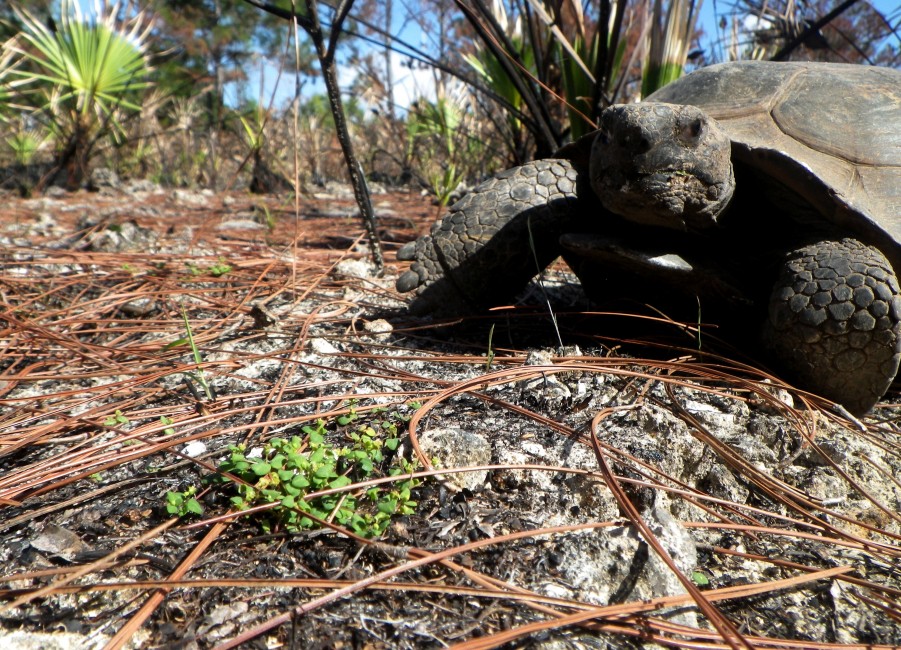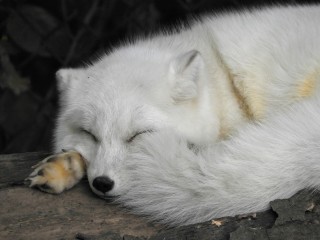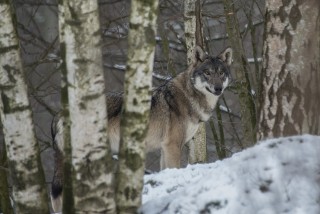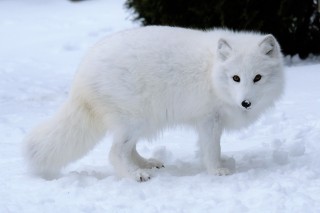
December 12, 2014
“Winter” in Miami
- as seen by -
 Frank Ridgley
@Zoo Miami@zoomiami@zoomiami
Frank Ridgley
@Zoo Miami@zoomiami@zoomiami While most of the United States is gripped with the chill of the winter season, it is the dry season in sub-tropical Miami. Instead of falling leaves and snow, we have fire, ash, and rebirth.
This threatened gopher tortoise emerged from the safety of a nearby burrow to browse on new growth appearing just three weeks after a prescribed burn. The critically endangered fire-dependent ecosystem, called pine rockland, is left looking like an inhospitable lunar landscape of jagged limestone and sand after a fire comes through. But, the fire is incredibly important for the endemic species, like the federally endangered Deltoid spurge in the foreground, that require an open canopy to survive.
What was once a vast coastal forest found only in extreme south Florida and a few Caribbean islands has been reduced to less than two percent of its former range in the last 100 years. To put that in perspective, there are approximately twice as many tigers and four times as many African elephants left in the world. It is the most biologically diverse ecosystem in south Florida.
The largest fragment of pine rockland left, outside Everglades National Park, surrounds Zoo Miami and is home to around 15 federally protected species and over 40 state-listed species. Some species that exist in this isolated fragment, like the Miami tiger beetle, are found nowhere else in the world.
What does winter wildlife look like where you live? Share your photos with us at Assignment.
Pentax Optio WG-1 GPS




Leave a Comment